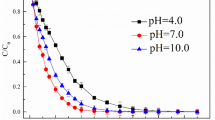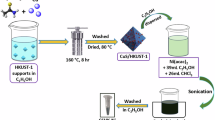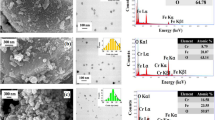Abstract
THE problems involved in the development of ultraviolet transmission filters have been discussed by Hunt and Davis1 and Kasha3. For the isolation of the mercury arc triplet near 3130 Å, nickel chloride, potassium chrom-ate and potassium biphthalate have been recommended as the best solution filters and have been widely used in the photolysis of ketones. Of these, potassium acid phthalate exhibits an amazingly sharp spectral cut-off just below 3100 Å, thereby necessitating its use as a high-frequency cut-off filter in conjunction with a region-selecting filter such as potassium chromate. But it is photochemioally unstable, tending to decrease transmission at 3130 Å with use, and, in order to maintain the transmittance fairly constant, it was suggested by Bowen3 that the biphthalate solution required continued renewal by means of a flow system.
Similar content being viewed by others
Article PDF
References
Hunt, R. E., and Davis, jun., W., J. Amer. Chem. Soc., 69, 1415 (1947).
Kasha, M., J. Opt. Soc. Amer., 38, 929 (1948).
Bowen, E. J., J. Chem. Soc., 2236 (1932).
Author information
Authors and Affiliations
Rights and permissions
About this article
Cite this article
VENUGOPALAN, M., PRITCHARD, G. & MILLER, G. Transmission by Biphthalate at 3130 Å. Nature 200, 568 (1963). https://doi.org/10.1038/200568a0
Issue date:
DOI: https://doi.org/10.1038/200568a0
This article is cited by
-
Transmission by biphthalate at 3130 �
Die Naturwissenschaften (1964)



